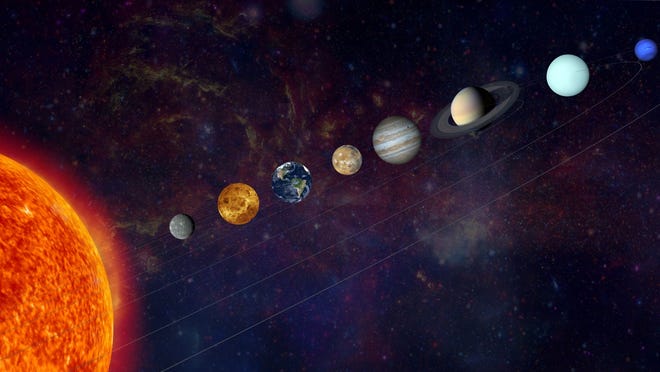Another planetary parade is expected this month and will come this weekend.
If you missed the last one or want a second chance to flex your telescope skills and snap some photos, here are the details.
Planetary alignment on June 29, 2024

A planetary alignment, also known as a planetary parade, is when several planets gather close together on one side of the sun at the same time, according to Starwalk.space.
NASA reports that the second planetary alignment of June, a few weeks after the first on June 3, will occur on Saturday, June 29.
Before dawn on June 29, Saturn, the Moon, Mars and Jupiter will be aligned in the sky. Sources like USA Today and SkySafari Pro say Uranus and Neptune will also be visible during the event. While some planets will be visible to the naked eye, others like Neptune will need the help of high-powered binoculars or a telescope to see.
How does planetary alignment work?

All the planets revolve around the sun along the same orbital plane, known as the ecliptic on Earth, and they all travel along it and eventually reach each other over time. Once the planets meet, it looks like they’re in a line as they travel to Earth, but the line won’t be perfectly straight, according to Space.com.
With each planet moving at different speeds, the alignment will only last for a short time, depending on each planet’s distance from the sun. This is also why planetary alignments do not always have the same number of planets.
- A conjunction is when two or more planets come close together in the sky.
- A mini planetary alignment includes three planets.
- A small planetary alignment includes four planets.
- A large planetary alignment includes five or six planets.
- A large or full planetary scope contains all the planets of the solar system, and sometimes even Pluto.
Delaware Whale Watching:Whale blowout at Bethany Beach leaves nearby paddlers excited to capture it on video
Where to see the planetary alignment on June 29

The planetary alignment will be visible almost anywhere in the U.S. on June 29, according to NASA, but the ideal time to tune in may vary depending on your specific location. Tall mountains and tall buildings in your area can also hide planets from view, according to Starwalk.space.
The best place to watch will be a patch of dark sky with no light pollution and a clear view of the horizon.
When will the next planetary alignment be visible?

If you end up missing out completely, planetary alignment isn’t as rare as it seems, and there will be chances to see the parade again.
From Space.com’s point of view, it’s quite common to see the planets line up along the ecliptic from our perspective on Earth, and it happens a few times a year.
In case the June 29 celestial event doesn’t happen for you, the next planetary parades to note will occur on August 28 and January 18, 2025, both of which will feature Mercury, Mars, Jupiter, Saturn , Uranus and Neptune. , according to Starwalk.space.
Got a tip or a story idea? Contact Krys’tal Griffin at kgriffin@delawareonline.com.
#planets #parade #approach #June #NASA #Heres #watch
Image Source : www.delawareonline.com
